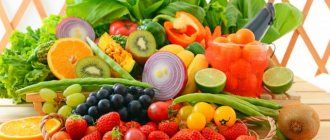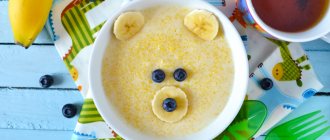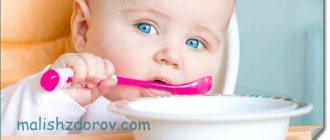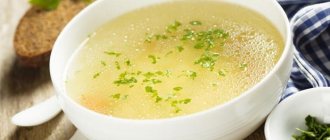General recommendations on how to feed your baby in the morning
Probably every mother knows how difficult it can be to feed a child. Especially after sleep. But going for a walk on an empty stomach is also not the best option. Because literally in 10-15 minutes the baby will ask to eat. And all you can offer him is cookies or candy. Let's see how to feed your baby a delicious and healthy breakfast in the morning.
The main thing is that there is no need to rush. The most common mistake parents make is when they wake up their child in the morning and, without even letting him wake up, force him to go eat. What do we see in the end? The sleepy baby trudges to the kitchen with difficulty, obeying the will of his parents. And instead of having a delicious breakfast and enjoying it, he forcefully eats the breakfast offered. But poorly digested food is poorly absorbed, and the baby does not receive the necessary vitamins and nutrients.
Try changing tactics. Give your child a little time to finally wake up. Let him wash himself first, do exercises and make his bed. And after such simple procedures, he will probably have a desire to have a delicious breakfast. After all, there is a whole day ahead and the baby just needs to recharge with energy. For breakfast foods, choose those that your baby loves the most. This will not only provide him with nutrients and vitamins, but will also lift his spirits.
No need to prepare culinary masterpieces for breakfast. One of the most common options will be enough
:
- Any dishes made from cottage cheese (cottage cheese with sour cream, cheesecakes, casserole).
- Light porridge or muesli.
- Eggs (boiled, scrambled, scrambled eggs).
By the way, many children love toast. But to make them healthier, they should not be fried, but baked. Therefore, if you prepare a few toasts and a cup of tea or cocoa, then you will probably be able to feed even the most “harmful” child breakfast.
What to feed your child for breakfast if he does not eat porridge. What to do if the child does not eat porridge?
Porridge is one of the main products in the diet of children, starting from a very early age. Their benefits for a growing body are difficult to overestimate. Cereals are a rich source of vegetable proteins and fiber, a number of vitamins (group B, vitamins A, E, PP and H). In addition, porridges contain a lot of microelements: phosphorus and potassium, chlorine, sulfur, calcium, magnesium, sodium and copper, iron, zinc, chromium, boron and molybdenum, as well as many others.
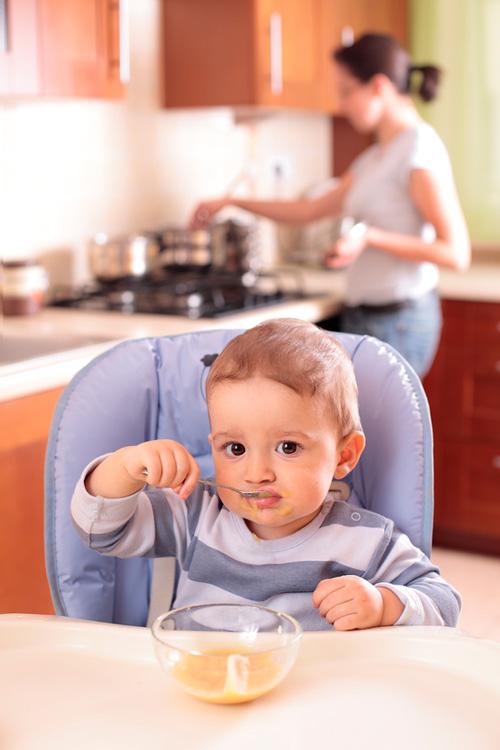
In addition, porridges are a source of large amounts of carbohydrates, which means they supply the baby with energy reserves. And a sufficient amount of fiber, which is found in a variety of cereals, is extremely necessary for the baby’s intestines so that digestion works without failures. In addition, some of the cereals have the ability to remove toxins and waste from the body, as well as products of drug metabolism.
Pediatricians and nutrition institutes in different countries recommend porridge as one of the first complementary foods introduced at the age of 6-7 months. However, not all kids are favorable towards porridge, and a lot of effort needs to be made to interest them in this new dish. However, if a child does not eat porridge, this does not mean at all that you need to use a variety of “tambourine dances,” tricks and tricks to cram as much food into the child as possible. A child who previously only knew the taste of mother’s milk or formula needs to be helped to adapt to the product and given time to get used to new tastes.
Millet porridge - contains 70% starch, 12-15% protein containing essential amino acids, as well as a large amount of fat 2.6-3.7%, fiber 0.5-08%, a small amount of sugars up to 2%, vitamins B1 , B2, PP and a large amount of phosphorus, zinc, iodine, potassium, sodium, magnesium and bromine. Helps strengthen the muscular system.
Why don't children eat porridge?
There are several reasons why children do not eat porridge or eat it without enthusiasm:
- the child does not yet know the taste of the new product, he needs to get used to it;
- the child is not yet ready to eat porridge, his body is not yet ready to digest it;
- he may not like a particular type of porridge;
- the baby may simply not be hungry enough to eat porridge.
The most beneficial for a child’s body from the beginning of complementary feeding are considered to be porridges that are cooked in water without adding sugar and salt. However, not all children will willingly eat such a product even at the beginning of complementary feeding. In this case, you can try to start complementary feeding with other food groups - vegetable purees, cottage cheese and kefir, fruit purees. And then again try to interest the baby in porridges, supplementing them with those products that he has already grown to love. For example, you can add a banana, apricot or grated apple to oatmeal, carrots, pumpkins, egg yolk, cheese to buckwheat porridge, banana, cottage cheese or kefir to rice porridge.
If the child categorically does not want to eat porridge in any of the options you offer, then you should leave him alone for a couple of weeks, and perhaps after this period the baby will be ready to accept porridge more favorably. As the child adapts to porridge with water, you can introduce a diet of porridge with milk, with the addition of butter and a very small amount of sugar.
It is extremely rare that a child does not eat porridge at all; usually he refuses some types that he simply does not like. It is important to offer all options and find the best option.
Porridges can be made from one grain (mono-component) or from a mixture of grains. Often children favorably perceive unloved cereals mixed with other, more beloved ones. For example, children who like porridge with rice cereals, but do not like millet, eat very well the “friendship” porridge made from a mixture of rice and millet.
Rice porridge - contains B vitamins: thiamine B1, riboflavin B2, niacin B3 and B6; vitamin PP, carotene, vitamin E, which help strengthen the nervous system and have a beneficial effect on the condition of the skin, hair and nails. Rice contains a number of microelements: potassium, phosphorus, zinc, iron, calcium, iodine and selenium. Rice contains complex carbohydrates, so rice is nutritious without being high in calories.
What to do if your baby doesn’t want to eat porridge?
There are some simple tips for those children who eat poorly or do not eat porridge at all. First of all, you don’t need to force your child to eat porridge; act on the principle “if he doesn’t want to eat, don’t.” As the diet expands, cereals will one way or another appear on the baby’s menu.
- It is important to let your child get hungry. So, for example, a child of 8-9 months needs to take a break between meals of about 3.5-4 hours. If your baby doesn't eat porridge well, the most likely reason is that he isn't hungry enough yet.
- You can diversify and improve the taste of the porridge (sweeten it) by adding a baked or fresh apple, pear, banana, peach or apricot, if these products are already included in your little one’s diet. It is also permissible to add vegetables familiar to the child’s diet to the porridge - carrots and cauliflower, pumpkin, broccoli or beets.
- For breastfed children, you can add breast milk to the porridge. A well-known taste will help the child get used to a new dish. You can prepare the first porridges using milk formula that is familiar to your child. You can also add fermented milk products familiar to your child’s diet to the porridge - cottage cheese, kefir, biolact.
The most important thing is not to form negative reflexes towards it during the process of introducing porridge. You cannot force children to eat porridge, literally stuffing every spoonful into their mouth; there is no need to focus the child’s attention on how much he has eaten; there is no need to compare him with other children or criticize or scold the baby.
Buckwheat porridge - contains eighteen essential amino acids, iron, calcium, potassium, phosphorus, copper, iodine, zinc, boron, fluorine, molybdenum, cobalt, as well as vitamins B1, B2, B9 (folic acid), PP, vitamin E. Buckwheat contains a lot of folic acid, which stimulates hematopoiesis, increases the body's endurance and resistance to many diseases.
What to do if a child stops eating cereal?
It often happens that a child willingly ate porridge from early childhood, but as he grew older he began to refuse it. What could be the reasons?
Most often, the porridge simply becomes boring and boring for the child. You can exclude this porridge or all porridges from the menu for a while (from a couple of weeks to a month), and then offer a new version of an already known dish or prepare it from a different type of cereal. To prevent porridge from becoming boring, it is important to alternate cereals throughout the week - fortunately, there are a lot of cereals, and you can always choose options.
However, you shouldn’t completely give up cereals in baby food, because they are extremely useful for all systems of a growing body, from the brain and bones to the digestive tract and immunity.
The RAMM Institute of Nutrition and WHO recommend creating a healthy child’s diet in such a way that cereals and grain products (bread, pastries, side dishes, pasta) make up up to 50% of all food consumed.
Oatmeal - contains vitamins B1, B2, PP, E, calcium salts, phosphorus, iron and magnesium. An excellent sorbent that promotes the removal of heavy metal salts. It has an enveloping and anti-inflammatory effect on the gastric mucosa.
How to choose “your” porridge?
Of course, cereals are good for children, but each cereal has certain properties that, depending on individual indications, may not be suitable for a child. Often, children literally become hysterical when they don’t want to eat cereals that are too dense for them (they still don’t chew and swallow well), are too dry, or have a negative effect on digestion (harden the stool, make the stomach churn). For example, cereals with gluten, if you are intolerant to it, can cause serious intestinal problems and cause a rash. It is worth consulting with your doctor which cereals are most suitable for your baby, and which ones should be placed on the table rarely or completely excluded.
For example, semolina porridge is not suitable for overweight children, because... it is very high in calories, and porridge with gluten should not be consumed by allergy sufferers for at least the first year or two. If you have gluten intolerance, they are completely excluded from the diet. If your baby is prone to constipation, you should be careful with rice porridge - it can strengthen the stool.
It remains to recall the folk wisdom: “Soup soup and porridge are our food!” Include porridge in the family menu more often, because the example of adults works better than any persuasion. And then your baby will treat porridge as an integral part of the diet, he will grow up strong and healthy, and no one will say about him that he “ate little porridge as a child.”
Semolina porridge contains all the elements that are found in wheat grain: it is rich in starch, to a lesser extent in proteins, vitamins E and B1, B2, B6, PP. Semolina contains a lot of iron and very little fiber. Semolina contains a lot of gluten. It is a good remedy for treating all intestinal diseases, cleanses the body of mucus and removes fat.
What foods should you eat at breakfast?
A nutritious and healthy breakfast for children must certainly contain at least 3 types of products from the following groups
:
- Fruit group - This can be whole fruits such as oranges, apples or bananas, or cut fruits that can be added to yogurt or oatmeal.
- Vegetable Group – This group consists of whole vegetables, chopped vegetables, 100% vegetable juice, mushrooms, asparagus, green peppers.
- Grain group - whole grain bread, bagels, muffins, flour tortillas, dry cereal, rice.
- Dairy group – skim or reduced fat milk, cheese or yogurt. If your child is lactose intolerant, foods in this group should be replaced with other foods that are rich in calcium but do not contain lactose.
- Meat Group – In addition to meat, this group also includes beans, eggs, peanut butter, poultry, fish, and seafood.
What to cook for your child for breakfast
It’s not difficult to prepare a healthy breakfast for children when you know exactly what foods should be included in the child’s diet. It's no secret that breakfast is much more important than dinner or lunch, and especially for children. Any child should start his day with breakfast, and what he eats for breakfast directly determines how he feels during the day. Breakfast should be nutritious and healthy, and at the same time, your baby should never overeat. A healthy breakfast for children should include dishes that contain glucose, minerals, iron, and other vital microelements.
A tasty and healthy breakfast for children can consist of the following traditional and non-traditional dishes
:
- Whole grain porridge with fruit and skim milk;
- Oatmeal with raisins and skim milk;
- Waffles and fruit juice;
- Bagels with cheese or peanut butter;
- Omelette with cheese and vegetables;
- Sandwich with cheese and juice;
- Sandwich with a cup of skim milk;
- Rice with chicken and vegetables.
Recipes for every day with photos
So, what to feed a one-year-old child and what delicious food to prepare for your child? First of all, let us remind you that children should eat not only tasty, but also healthy. Creating a menu is sometimes a rather difficult task, because children in the first years of life can be very capricious when it comes to food. We bring to your attention dishes that a diet for little gourmets may include.
Pumpkin and apple soup
For your little one to enjoy this recipe you will need the following ingredients:
- Pumpkin (150 g).
- Apple.
- Butter (30 g).
- Onion.
- Cream (150 ml).
- Salt.
- Greens (parsley, dill).
Peel the pumpkin and apple, cut into small cubes, place in an enamel pan. Pour water over the food and simmer over low heat until it softens.

After this, add finely chopped onion and cream to the soup and leave the dish on the fire again. Finally, puree the soup in a blender. You can add salt both at the beginning and after preparing it. Before serving, add butter and herbs to the plate.
Rabbit meatballs
The diet for children aged 1 year must necessarily include meat. It is a valuable source of iron, vitamins and amino acids. An excellent option is rabbit meat. To prepare the meatballs you will need the following ingredients:
- Rabbit fillet (300 g).
- Onion.
- Carrot.
- Crackers.
- Cream (150 ml).
- Egg.
The fillet needs to be chopped in a food processor or passed through a meat grinder, add chopped onions and carrots, add salt, and mix the minced meat with egg and breadcrumbs. Form small balls from the resulting mass.
You might be interested in: Dr. Brown Baby Bottle
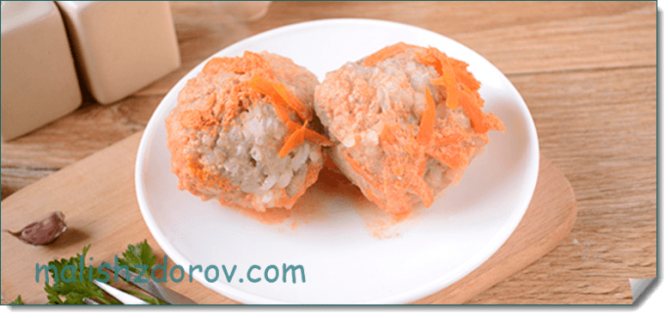
Fry the meatballs in a frying pan, then transfer them to a baking sheet, pour in cream and bake until fully cooked. If you don't have an oven, you can do it in the microwave. Before serving, decorate with herbs.
Fish and carrot cutlets with cream and herbs
Mothers know about the benefits of fish, but not all children agree to eat this product. We offer you a recipe that little fidgets will certainly appreciate. Ingredients:
- White fish fillet (300 g).
- Onion.
- Medium carrots (1 pc.).
- Potatoes (1 pc.).
- Egg.
- Cream (150 ml).
- Greenery.
Grind the fillet into minced meat using any available method, add finely chopped onions, carrots, potatoes and eggs to the resulting mass. Salt the minced meat to taste and mix thoroughly. Before frying, dip the cutlets in flour or breadcrumbs.
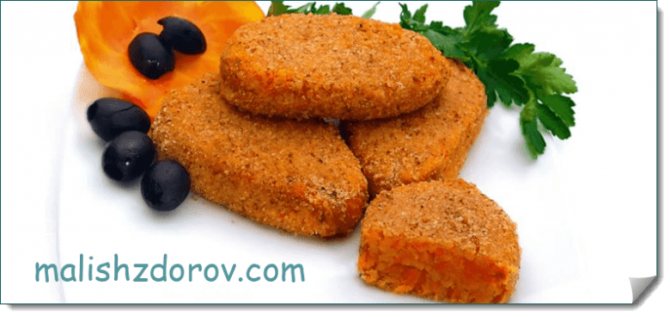
After that, simmer them in cream for 20-25 minutes at a temperature of 180 °C. Before serving, you can decorate the dish with grated cheese and herbs.
Rice porridge with dried fruits
A 1-year-old child's diet must include grains. Little sweet tooths will be delighted with this recipe. To prepare it you will need the following products:
- Brown rice (1 cup).
- Dried apricots, raisins, prunes.
- Milk (200 ml).
- Sugar (tablespoon).
Rice should be rinsed well, covered with clean water and simmered over low heat until cooked. After this, the water needs to be drained, pour milk over the porridge and bring to a boil again.
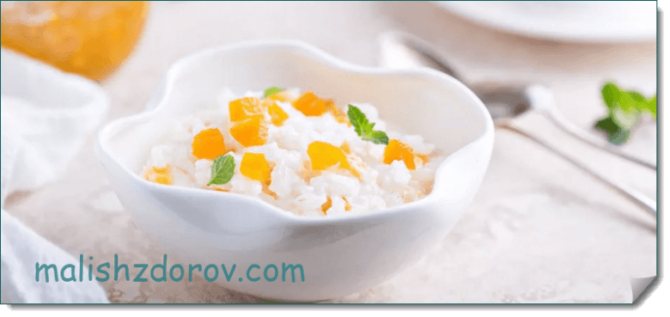
At the end, dried fruits are added to the dish, which must first be doused with boiling water and finely chopped. Sugar is added as desired. You can eat porridge warm or cooled.
Liver cutlets
Liver cannot be present in the daily menu for children of the first year of life, but sometimes this product can still be used in the diet. To prepare cutlets you will need the following products:
- Chicken liver (200 g).
- Egg.
- Onion.
- Buckwheat (half a glass).
- Cream (200 ml).
- Flour or crackers.
Grind the liver in a blender or pass through a meat grinder. Mix the product with buckwheat (you need to cook it first). Add an egg and finely chopped onion to the resulting mass.
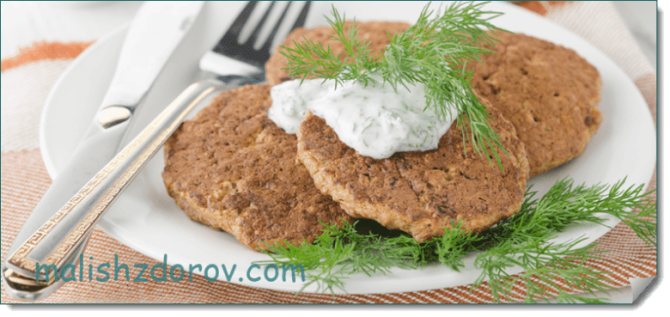
Before frying, dip the cutlets in flour or breadcrumbs. After frying, the cutlets are placed on a baking sheet, poured with cream and baked in the oven for 30 minutes at 180 °C.
Apple, banana and avocado salad
Dietary food for children may include various fruits. In the diet for babies aged 1 year, you can use salad with the addition of the following products:
- Apple (1 pc.).
- Banana (1 pc.).
- Avocado (1 pc.).
- Homemade yogurt without additives.
The fruits can be chopped very finely or passed through a blender, and yogurt can be added to the resulting mixture. This salad is perfect for an afternoon snack or dessert.
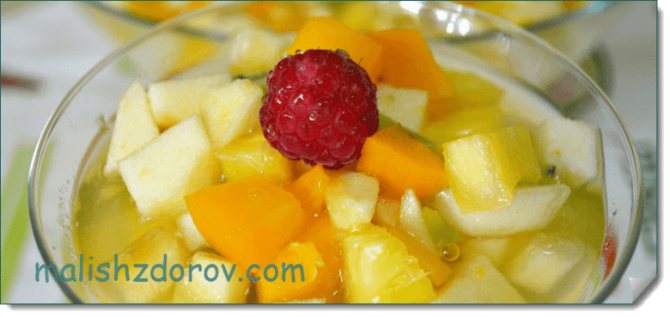
If your baby already has teeth for chewing, you can cut the fruit into thin strips or cubes.
Cauliflower and zucchini puree
Grains and vegetables should form the basis of the diet for children and adults. To prepare the puree you will need the following ingredients:
- Zucchini (200 g).
- Cauliflower (200 g).
- Milk (1 glass).
- Bulb.
- Salt.
- Greenery.
Vegetables need to be peeled, washed well and cut into small cubes. Mix the products with milk and finely chopped onion, put on low heat.
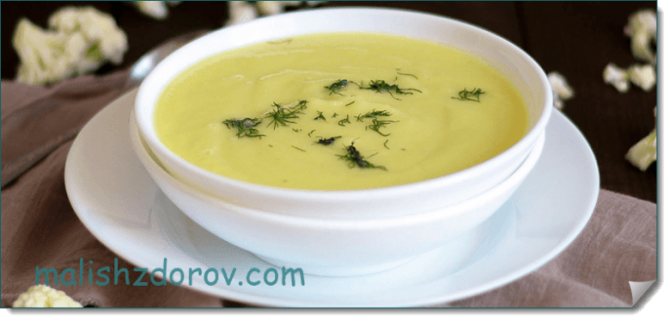
After boiling, simmer the soup for 20 minutes, then pass it through a blender and bring to a boil again. You can serve the puree with herbs or butter. Salt the puree to taste.
Broth with shrimp and cream
If your child loves seafood, you can pamper him with shrimp soup. To do this, take the following products:
- Peeled shrimp (5 pcs.).
- Potatoes (2 pcs.).
- Onion (1 pc.).
- Carrots (1 pc.).
- Cream (150 ml).
- Salt.
- Greenery.
To prepare this dish you need to add finely chopped potatoes, onions and carrots to boiling water.
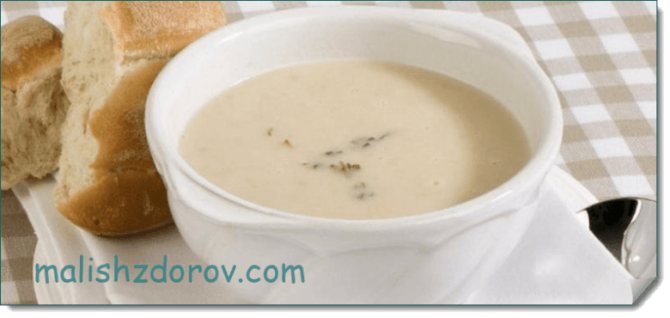
After they are cooked, peeled shrimp and cream are added. Salt the soup to taste. Before serving, decorate the dish with herbs.
Quick breakfast options for children
Porridge
It is very good if it is different every day. Buckwheat, oatmeal, corn, barley porridge contain many valuable vitamins and minerals. But the well-known semolina has less nutritional value - it contains too little plant fiber.
For children, it is better to cook porridge with milk. According to WHO recommendations, children should receive at least two servings of dairy products per day (for example, 250 ml of milk and 30 grams of cheese with a fat content of no more than 20%). In addition, when combined with milk, all elements and vitamins from grains are better absorbed. Plus, milk enriches the porridge with complete animal protein. You can add a piece of butter, as well as berries, fruits, and a little honey to the finished dish.
Sandwich with butter and cheese
Butter is the only animal fat that is included in all dietary tables without exception. And all thanks to its property of enriching food with fat-soluble, easily digestible vitamins A, E, D. In addition, butter contains healthy fatty acids and complete protein.
Therefore, 1-2 times a week you can feed your child whole grain bread with butter and cheese. Here are the benefits of cereals, fats, and proteins.
Cheesecakes, dumplings, cottage cheese with berries
Porridge can be alternated with cottage cheese breakfasts. For example, casserole, cheesecakes, lazy dumplings. You can also make a cottage cheese smoothie - beat cottage cheese 5.5% with fruits or berries. Very filling and tasty.
Scrambled eggs, omelet
An egg breakfast can be offered to your child 2-3 times a week. It is useful to cook an omelet with vegetables and herbs, even with light meat - turkey, chicken. You can also make a sandwich with a boiled egg - spread butter on whole grain bread and place two halves of an egg. You can do it while it’s hot – the butter will melt a little.
Pancakes or pancakes
Pancakes made from healthy flour - oatmeal, buckwheat - are also an excellent option. And if you make pancakes with spices (for example, grated pumpkin, apple, bananas), then it will not only be tasty, but also very healthy.
What foods can be included in the diet for a 1 year old child?
Some foods must be included in the children's table, and some can be given to the baby several times a week. First, let's look at the required products:
- Milk. Considered a source of calcium, protein and some important vitamins. At 1 year of age, you should not stop breastfeeding, even if the little one is already happy to try adult food. The baby can be breastfed in the morning and before bedtime.
- Mixtures. It is better to use adapted mixtures. You can replace them with kefir. Before bedtime, you can give your baby 150-200 ml of fermented milk drink.
- Cottage cheese. This product can be used in any form in the diet (raw, cheesecakes or casserole). A child can receive up to 50 g of dairy product per day.
- Yogurt or kefir. Products containing live bacteria are suitable. It is better to choose a proven one.
You should buy food only in specialized stores or supermarkets. It is important to check the expiration date of the product and its storage conditions. Dairy and fermented milk products spoil very quickly. Under no circumstances should you purchase milk, kefir or other food from spontaneous markets or from hand.
Vegetables and fruits
To meet the body's needs for vegetable protein, fiber, minerals and vitamins, a child needs vegetables and fruits. Vegetables such as zucchini, carrots, potatoes, and beets are suitable for preparing salads, purees and stews. Tomatoes and cucumbers can be given raw. You can include up to 200 g of vegetables in your baby’s daily diet.
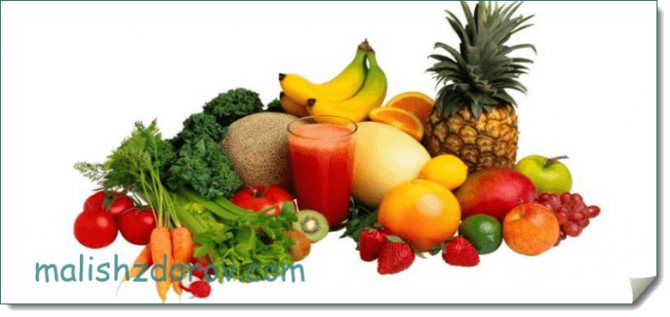
Fresh fruits and berries contain a large amount of vitamins. The menu can include pears, plums, apricots, raspberries, cranberries, currants, bananas, apples, peaches, blueberries, lingonberries and others. At 1-1.5 years old, it will be enough for a baby to eat 100 g of fruits and berries.
Porridge
Cereals are an essential source of B vitamins, minerals and slow carbohydrates. Buckwheat, oatmeal, millet, wheat or rice cereals are suitable for the diet of a 1-year-old child. A toddler can eat up to 200 g of cereals per day. Semolina porridge can be given no more than once a week. The fact is that semolina contains a large amount of phytin, which impedes the absorption of vitamin D.
Meat and fish
Meat products are necessary for a child to compensate for the deficiency of protein, B vitamins, iron and amino acids. The best types of meat for a 1 year old baby's diet are lean pork, rabbit, turkey, chicken, and veal. It is better to prepare puree, soufflé or steamed meatballs from meat. The weekly menu should include 80 g of product per day.
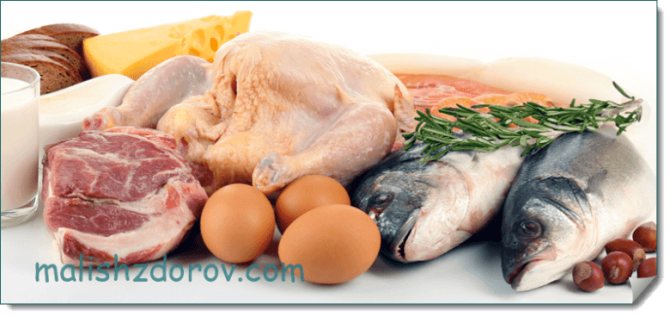
It is better to take fish without a lot of bones. Fat content should be medium or low. Fatty varieties can be given no more than once a week. In the table you can find fatty and low-fat varieties of this product.
| Fat content | Name |
| Fat | Pink salmon, herring, mackerel |
| Medium fat content | Catfish, sea bass, carp |
| Low-fat | Pollock, hake |
You can prepare casseroles, cutlets, meatballs, souffles and other dishes from fish.
Bakery products
The daily diet for a 1 year old child should include 30-40 g of wholemeal bread. Rye bread will also work. You can offer your little one biscuits, dry biscuits or soft crackers with raisins as a dessert. It is not recommended to give white bread to your baby.
Eggs
From the age of 1 year, eggs can be included in the little person’s menu. They help replenish the body's need for vitamins and amino acids. There should be only chicken or quail eggs on the child’s table. They should be subject to careful heat treatment. Every other day, the baby can receive half a chicken egg or one whole quail egg.
You might be interested in: How to properly put your baby to sleep
Vegetable and butter
The oil contains a large amount of vitamins A, E and D. This product is rich in fatty acids and other beneficial substances. A child should receive 5 g of vegetable oil and 15 g of butter per day. You can add it to porridge, salads, casseroles or other dishes included in the menu.
Beverages
Give your child only boiled water. You cannot drink water from a tap, well or borehole. This is associated with a greater risk of parasitic infections. If it is not possible to purchase purified water or install a filter, you should boil and settle the tap water well.
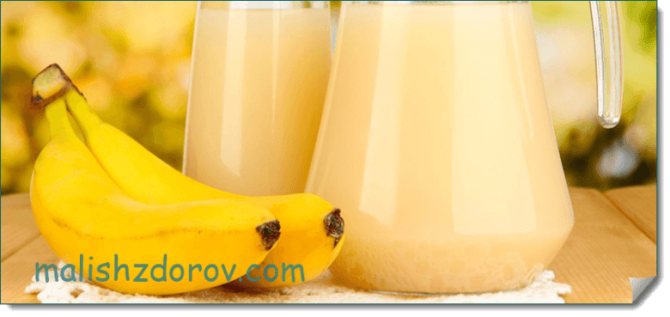
In addition, you can offer your baby natural juices, compotes, and fruit teas. Sugar should not be added.
Funny breakfasts: a selection of photos
Engage your little one with funny and interesting ideas for serving your breakfast. Let him first be attracted by the appearance of delicious food, and then rest assured it will come to the “tasting” process itself.
Every mother can present a dish in a cheerful way, even if she seems to have no ideas. To do this, choose your favorite idea from a selection of photos or imagine it yourself. Let your kids eat well and be healthy!




